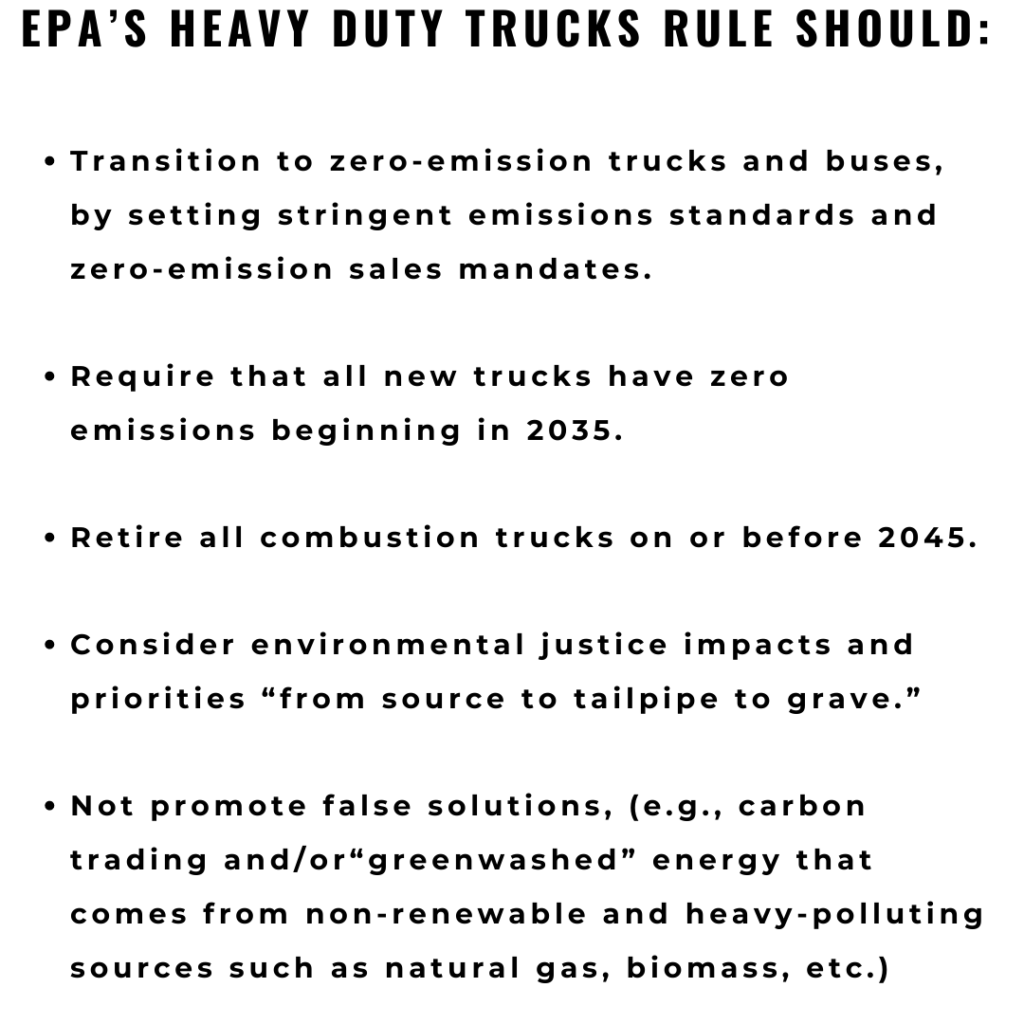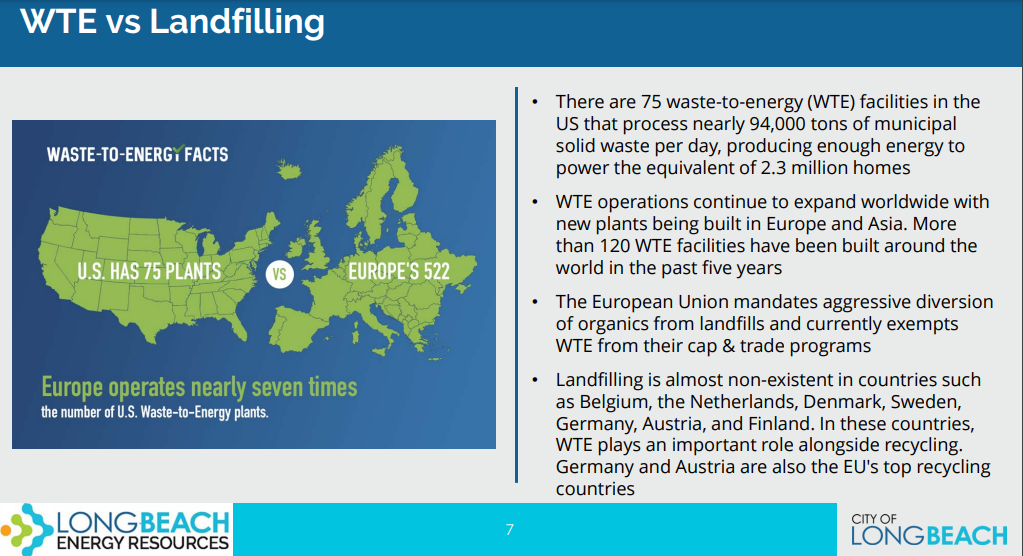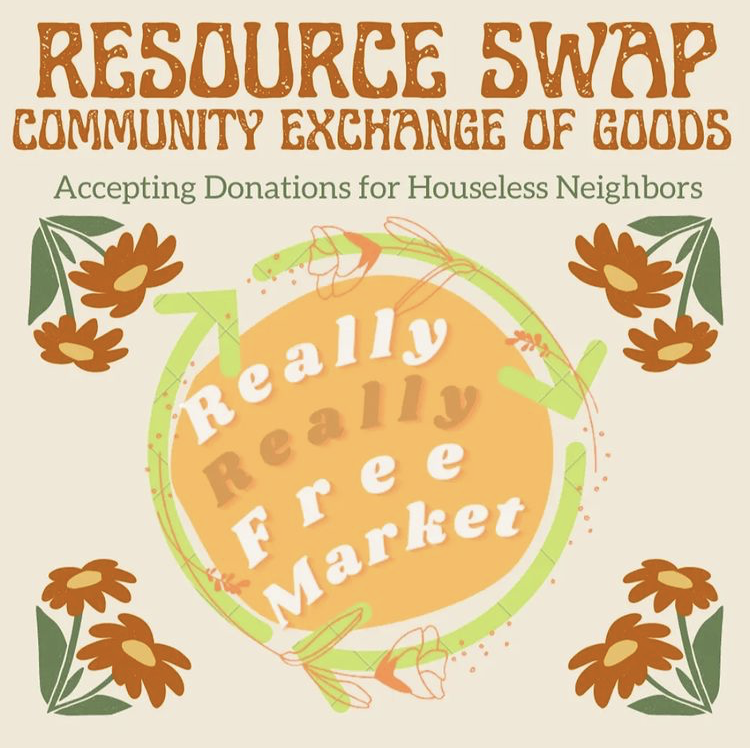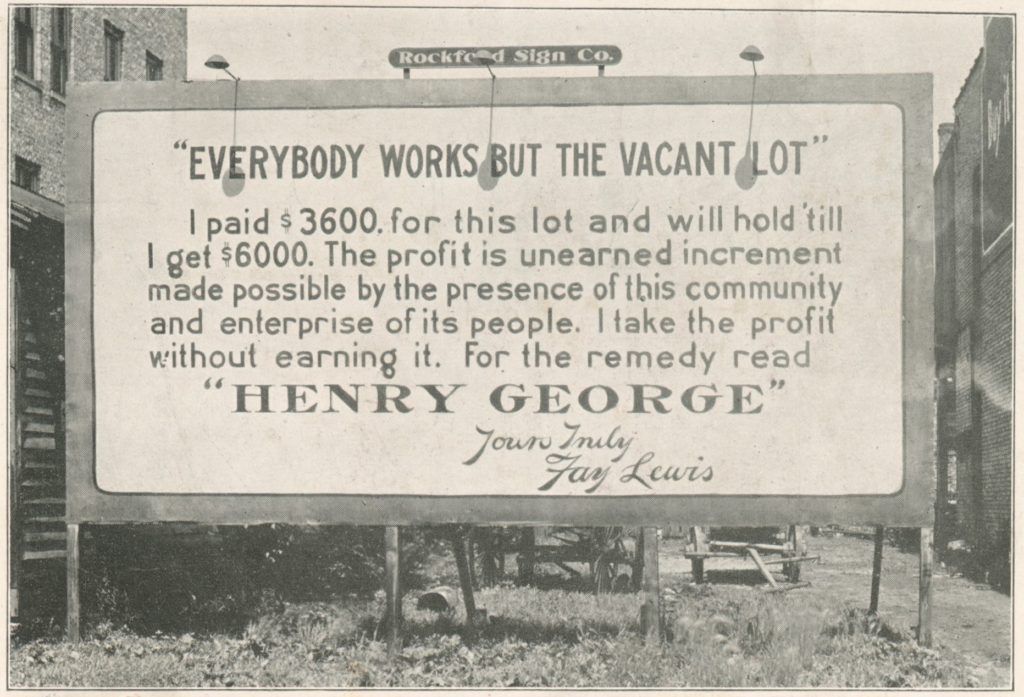Eco Notes: EPA’s ‘Weak’ Heavy-Duty Truck Rule Receives Backlash, Council Presentation on Trash Incinerator Contradicted by Report
22 minute readWelcome to another edition of Eco Notes. Today, I’ll be looking at the local backlash to the Environmental Protection Agency’s (EPA) newly proposed national Heavy Truck Rule and the one-sided SERRF incinerator presentation given to the City Council at a recent study session, as well as the calls to shut the facility down. I’ll also touch on some good news like the exciting California state park pass program at the library, a local Really Really Free Market, and a few ways to get civically engaged.
PUBLIC COMMENT OPEN FOR EPA’S ‘WEAK’ HEAVY DUTY TRUCK RULE
During a virtual hearing on April 12, Taylor Thomas, co-director of the East Yard Communities for Environmental Justice (EYCEJ) and a member of Moving Forward Network (MFN) gave a scathing critique of the new EPA’s Heavy Duty Truck Rule proposal.
“There has been a lot of fanfare out of this agency over the last two years complete with promises of change and progress and yet what we have before us … is business as usual,” Thomas commented.
The proposal, shared by the EPA in late March, calls for stricter engine standards designed to reduce nitrogen oxide (NOx) emissions from the trucks used in the freight system throughout the nation. It proposes a multi-pronged approach that includes upgrades to testing and certification for heavy-duty trucks, maintenance education for drivers, and increased regulations for certain light trucks and marine engines. The proposal presents two options with slightly varying timelines (option one being the more stringent of the two), while also “providing manufacturers with flexibilities to meet the proposed standards while clarifying our regulations.”
Implementation is not projected to even begin until model year 2027, meaning measurable progress in this area could still be decades away. The EPA states that “2045 is a snapshot year… in which the proposed program would be fully implemented and when most of the regulated fleet would have turned over.”
Though the proposed 2027 limits may reduce the federal average of emissions, they are still well short of what is already established in California under the Heavy-Duty Omnibus rules, which are set to be fully phased in by 2031 and are currently in the process of being adopted by Washington, Oregon, and Massachusetts too.
In an April 8 blog post, Britt Carmon and Patricio Portillo, senior advocates with the Natural Resources Defense Council (NRDC), wrote “The last set of [federal] truck standards were developed over two decades ago. Unfortunately, the agency’s proposal is weaker than existing state action and fails to advance the deployment of zero-emission trucks at the pace needed to address the urgent public health crisis caused by tailpipe exhaust.”
NRDC is another member of the aforementioned MFN coalition, which includes over 50 local and national groups that represent individuals from communities impacted by unsafe air quality levels. Thomas and the majority of EYCEJ’s membership reside in the heavily burdened area known as the “diesel death zone,” a corridor that stretches along the 710 freeway from the west side of Long Beach up to the city of Commerce. Waiting for serious action to be taken is not considered an option any longer for these impacted communities. Telling the EPA to go back to the drawing board, Thomas admonished, “you should be proposing solutions aimed at phasing out our dependency on deadly diesel.”

In October 2021, MFN submitted a list of demands on behalf of their members insisting the EPA take the public health crisis caused by the pollution from the global freight system seriously. Thomas testified, “We said zero emissions, we said concrete action… how that was taken and re-interpreted to mean weak and delayed— it doesn’t make sense.”
Do yourself a favor and watch her powerfully delivered testimony in full here.
MFN organizers contend that the so-called “flexibilities” given to truck manufacturers in the proposal, such as an emphasis on lowering the “fleet average” instead of pushing for zero emissions across the board, could create loopholes. For instance, they say manufacturers could simply produce a number of zero-emission electric trucks to offset the continued creation of trucks that spew harmful tailpipe exhaust on average, and still meet the NOx standard. This could ultimately render the proposed standards meaningless.
Grassroots community groups are not the only ones who have been pushing the agency to improve long overdue truck engine standards. The EPA proposal acknowledges the influence of a 2016 petition from South Coast Air Quality Management District (SCAQMD) and more than 20 other organizations from across the country (including various other state and local air agencies). The petition called for action to be taken to significantly reduce NOx emissions in order to meet California’s National Ambient Air Quality Standards (NAAQS) standards last updated in 2015.
Written comments will be accepted by the EPA here until Monday, May 16.

SERRF “STUDY SESSION” TURNS OUT TO BE ONE-SIDED PRESENTATION
When it opened in 1988, the Southeast Resource Recovery Facility (SERRF) trash incinerator in West Long Beach was touted as an energy producer that would pay for itself. Yet throughout its existence that has never been true. Instead it has continued to be subsidized by the city. A recent study titled “Vestiges of Environmental Racism” by Earthjustice, a nonprofit environmental law group (reported on here previously ) points out that “SERRF only provides a small fraction – about 0.3% – of the total electricity used in Los Angeles County.”
SERRF, which burns 275,000 tons of municipal waste each year, is publicly co-owned by the City of Long Beach and the Los Angeles County Sanitation District and operated privately by waste management company Covanta. At the council meeting held on March 22, Councilmember Al Austin (D-8) proposed conducting a study on the viability of SERRF citing that Covanta’s contract was set to expire in 2024. Councilmember Roberto Uranga (D-7) seconded Austin’s motion while mentioning that this was a newer issue for him since Long Beach’s redistricting had just caused it to be moved into his district.
According to the motion, “The scope of the study session should include reviews of SERRF’s incineration process, operational costs, energy production, recycling capabilities, greenhouse gas emissions, and possible alternatives.”
Councilmember Stacy Mungo (D-5) supported the study proposal at the time with a comment that implied an expectation that it would show SERRF in a favorable light, saying, “The more we know about how it saves us emissions, the better.”
Study Session = One-Sided City Staff Presentation
The April 5 study session consisted of a presentation by city staff during a special meeting prior to the general council meeting. Information regarding issues with the incinerator’s production of ash conflicted with information provided in CalRecycle records shared in the Earthjustice report. No other possible alternatives were discussed.
The main speakers were City Manager Tom Modica and Robert Dowell, director of the Long Beach Energy Resources Department. Appearing to choose his words carefully, Modica prefaced his introduction of Dowell by saying, “We have heard a lot of comments [previously] about SERRF without understanding the complexity of the incident… of the infrastructure that we have there.” He added that the intention was to focus on “going in deep on the science and data.”
But ultimately the cherry-picked data points the presenters choose to focus on made a huge impact on the resulting narrative.
The main argument given by Dowell for continuing SERRF’s operations was based on the false premise of an either/or scenario. Long Beach can either have an incinerator burn our trash up and take the leftover ash to the landfill, or expand our use of landfills and rely on them solely for waste disposal. With the framing set as this binary choice, Dowell was able to continually claim that SERRF is the best choice out of the two.
(During public comment following the presentation , environmental justice advocate Whitney Amaya addressed the fallacy of that narrative, as does the Earthjustice report. No one behind the dias challenged the premise.)
What Dowell failed to mention is that 34% of the municipal solid waste is organic food and yard waste that could be composted, according to CalRecycle, the state’s recycling and waste regulatory agency. The agency also noted that “two-thirds of the paper, plastic, and metals found in the disposed waste stream could reasonably be expected to be recycled.”
Alluding to claims that the incinerator was polluting the air, Dowell’s presentation included comparisons between the pollution coming from the incinerator and the pollution emitted by nearby refineries, freeways, and other major pollution sources in the area. He concluded that the pollution from the incinerator was next to negligible to the other major polluters.
He also pointed to a National Research Council report—from 15 years ago—that suggests there are no health issues related to waste-to-energy facilities (WTE), which is what the city prefers to call the incinerator. Dowell referred to the ash produced by SERRF operations as “non-hazardous.”
This is contradicted by the Earthjustice report, which found that the facility releases 150,000 tons of toxic ash into the air per year.
According to the report, the ash contains, “heavy metals and toxic compounds, such as lead, cadmium, and dioxins. The presence of these toxic compounds in the incinerator ash represents a serious threat to human health and the environment since these pollutants can cause cancer, alter DNA, and harm reproductive health, neurodevelopment, and other bodily processes and organ systems.”
State records cited in the Earthjustice report from March 2018 refer to a CalRecycle inspector who discovered “an excessive buildup of ash near the facility’s roads with heavily clogged sewage drain grates near SERRF’s ash storage building.”
The same ash that Dowell alleges is “non-hazardous” was found off-site as well, with the inspector noting “that it was difficult to breathe due to the amount of ash outside of SERRF.”
Tomisin Oluwole
Ode to Pink II, 2020
Acrylic and marker on paper
14 x 22 inches
Click here to check out our interview with Tomisin Oluwole, a a literary and visual artist based in Long Beach.

Instead of gunking up our site with ads, we use this space to display and promote the work of local artists.
Dowell—who spent 18 years working for SoCalGas before coming to the city—emphasized several times that SERRF was located in an industrial area and that the closest resident was a whole 1.7 miles away. Notably, 81% of residents who live between that 1.7 mile marker and up to 5 miles away are people of color.
SERRF is one of only two incinerators left in California and is the only incinerator in the nation next to five “nonattainment areas.” Nonattainment areas are places where pollution levels exceed federal standards.
As a justification for the continued operation of SERRF, Dowell made the claim that Europe operates nearly seven times the amount of incinerators than the U.S. However, a recent report published in Yale Environment 360 found that “concerns about incineration’s outsized carbon footprint and fears it may undermine recycling are prompting European Union officials to ease their long-standing embrace of a technology that once seemed like an appealing way to make waste disappear.”

Like European officials, California lawmakers are looking to phase out this outdated technology with AB 1857, a bill in the state legislature that would end the diversion credit for municipal solid waste incinerators is expected to make its way to the general assembly (moving from the special commission group) at some point in the near future.
Dowell’s presentation made it clear that the City was largely prompted into action at this time due to AB 1857. Dowell said it was a “pivotal” moment and predicted that were the law to pass, it would be doomsday for SERRF.
According to the Earthjustice report, SERRF has run into financial problems. Its expenditures were nearly $43 million while only bringing in $36 million in revenue, resulting in a financial gap of about $7 million.
Dowell called for the council to take action against AB 1857, adding that a significant capital investment was needed to keep SERRF operating for the next 30 years. That would be on top of the $13.7 million the city already committed toward updating and repairing the facility in 2018.
Due to the rushed nature of the scheduling of the study session, there was low attendance and criticism for the lack of public outreach. Patricia Chen, who spoke in opposition of SERRF during the public comment portion, told Council that she was affiliated with both the local Universal Unitarian Church and EYCEJ and lamented not being able to speak on behalf of either groups due to the lack of time to gather with them beforehand. She also noted that public comment was possible in person but not virtually despite COVID still being a concern.
One of the two speakers who spoke in support of SERRF was a Covanta worker who wanted to co-sign what “Bob” (Dowell) said in advocacy against AB 1857. The only reason given was because he liked his well-paying job and didn’t want to lose it. A just transition to clean jobs is often touted as a necessary part of any environmental justice solution, the Earthjustice report discusses this in detail.
Several speakers called for the council to reject the proposal to pour more tax dollars into SERRF in light of the desperate need to put resources towards infrastructure for zero emissions and zero waste instead. Modica noted that it would take “a lot of creative solutions” to reach “aspirational” zero emission levels, but did not seem to have any vision to share in that regard.
The funds earmarked for SERRF could be used to support citywide composting, community repair centers, infrastructure to repurpose trash for production needs and public art installations, as well as push for the city and state to support the use of postconsumer recycled content products. The list of possibilities goes on. Imagine if our city leaders had both the vision and the sense of urgency and courage needed to take big leaps to implement zero-waste and zero- emissions solutions at the accelerated pace our public health crisis warrants. Earthjustice points to Berkeley, San Francisco, and San Jose as a few examples of cities within California that were creating innovative incentive systems and ordinances that better promote reducing and recycling waste.
City staff is now engaged in a formal study to determine between another set of limiting options; signing a long-term contract or a short-term contract with Covanta to run SERRF. For what it is worth, they are also looking at the logistics for converting the facility to handling green waste.
THE GOOD NEWS
All Long Beach Libraries Participating in New CA State Park Pass Program
Your library card can now take you on more than just mental adventures. On April 5, the California State Parks and California State Library announced that going forward you just need a library card to get access to a free state park pass. (Of course, around 2 million Californians possess library cards. No, we will not be able to roll up to the park and flash our library cards to get in.) Your card now allows you to sign up to check out one of the 3 passes available from any of the libraries in town. Use it for a week to explore the great outdoors for free!

Clothing Swaps & Free Markets for the Win
Time to say no to fast fashion! This destructive form of so-called retail therapy has got to go. Not sure what that is? Think trendy mass produced synthetic clothes sold by companies like Shein or Forever 21. As fads and trends come and go, these clothes are produced and trashed at alarming rates which has contributed to there being thousands of tons discarded clothes sent “away” to nations in South America such as this desert in Chile. The stated intention is to resell them since the materials they are made of make them unhealthy for our landfills, but they often end up being trashed.
“Textile production is one of the most polluting industries, producing 1.2 billion tonnes of CO2 equivalent (CO2e) per year, which is more emissions than international flights and maritime shipping, “ according to the scientific journal Nature. This is where the folks with the Really Really Free Market step in.
Clothing swaps and free markets have become increasingly popular and are a great way to give away things you have outgrown and to re-up your own stash of clothes without adding the negative impact to the environment. RRFM is held at the Adaept Design artist space on the third Sunday of each month.
RRFM folks encourage community members to bring their gently used items to be redistributed among the community for continued use instead. Follow RRFM LBC on Instagram to stay informed.
Quick Calls to Action
Submit a comment to the EPA about its Heavy Duty Truck Rule here. The deadline to comment is May 16.
Sign the Change the Name petition to switch the name of Lincoln Park (corner of Ocean & Pacific in DTLB) to Toypurina park. A revolutionary Tongva woman and healer, Toypurina led a rebellion against the Spanish missionaries that had inflicted trauma by way of forced assimilation and genocide. Lincoln, on the other hand, oversaw the execution of the largest group of Indigenous folks in US history when he approved the execution of 38 members of the Dakota tribe in 1862.
Will Long Beach City College on PCH end up underwater by 2100? Check out this interactive map which lets you take a “choose your own adventure” approach to the examination of our future.
Sign this petition to transition the Long Beach Beach Unified School District to clean, renewable energy.
Send a postcard to Gov. Gavin Newsom to say no to any new fossil fuel projects in 2022.
Confused as to what you can recycle and what you cannot? Click here.
Join in on the CalRecycle planning process for “building California’s circular, remanufacturing and reuse system.” Click here to register for the May 17 discussion.
ICYMI: Related FORTHE Articles
‘She’s Not From This Country’: Assemblymember Mike Gipson Dismisses Opponent, Student Activist and Environmental Record at Town Hall
Gipson dodged questions about his environmental record by claiming those issues “don’t matter to the people in my community.”
Long Beach is Addicted to Fossil Fuel Money: Schools
The Long Beach Unified School District has received over $600,000 in donations since 2014 from an oil refinery that pollutes the air over some of its campuses.
PERSPECTIVE: End Offshore Drilling in Long Beach
Op-ed on the harm of offshore drilling as is done off the coast of Long Beach.
LBC Eco Notes: New Refinery Pollution Standards, Scathing Report on Trash Incinerators, and Air Regulators Call Push for Zero-Emission Trucks “Tone-Deaf”
Learn more about the Earthjustice report on the harm of SERRF and other incinerators and the short-sighted opposition to accelerating the transition to zero emission trucks.

The above image and the cover image for this article were created by Robert Lebsack, a talented multimedia artist and photographer who often incorporates recycled newspaper clippings and piano sheet music into his politically-charged paintings. He also co-owns a commercial photography and graphic design company called Chance Artworks, which he started in Long Beach over a decade ago with his partner, artist Kimberly F. Davis.


 erin@forthe.org
erin@forthe.org




